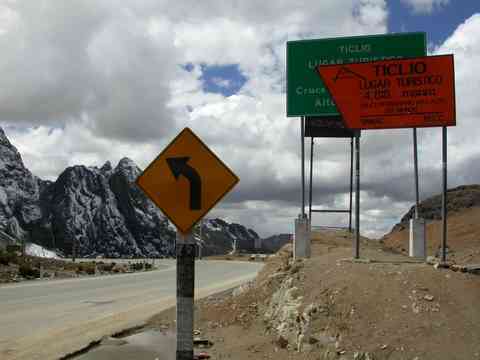
We drove A20 north-east towards Tarma. The mountains got closer to closer. These mountains are not the mountains you can see even in Japan. Much higher. Mt Fuji, the highest mountain in Japan is 3776 metres (12388 feet). These mountains along A20 in Peru are more than 4000 meters (13123 feet) – 5000 metres (16404 feet) in elevation.
Not surprising when you find out that the highest mountain in Peru, Huascarán is 6768 metres (22205 feet) in elevation, which is nearly 3000 metres (9843 feet) higher than our Mt Fuji. En passant, the highest mountain in the UK is Ben Nevis in Scotland which is 1345 metres (4413 feet) high. The highest mountain in Wales is Mt Snowdon, 1085 metres (3560 feet) and the highest in England is Scafell Pike, 978 metres (3209 feet).
Among these high mountains occasionally cross the railways, though we hadn’t seen any train then.
“Please stop the car at Ticlio pass. I would like to experience the thin air there in 4818 metres (15807 feet) in elevation.”
As soon as we arrived there, I got off the car. Indeed you would notice the thinness of the air immediately. You would feel very weak. I wanted to take photographs there, but what I could only do was just to press the shutter, with my body leaning against the car. Nothing else. I got in the car immediately after that, as if I was escaping from something bad.
Maybe with some psychological effect, I started to feel sick, although I had been completely fine until I got off the car at 4818 metres.
@@@@@@
By the way, the railway occasionally crossed with the road is from Lima to La Oroya (3750m, 12303f) and there it is divided into two sections. One line goes south-east to Huancayo (3271m, 10732f). Another line goes north. This railway is said to be the one which runs in the highest place in the world. Construction started in the late 1800s and took 40 years to complete. The main purpose of this line is to transport copper and zinc from mines in the Andes and also fruits of the earth and it runs once a day or so.